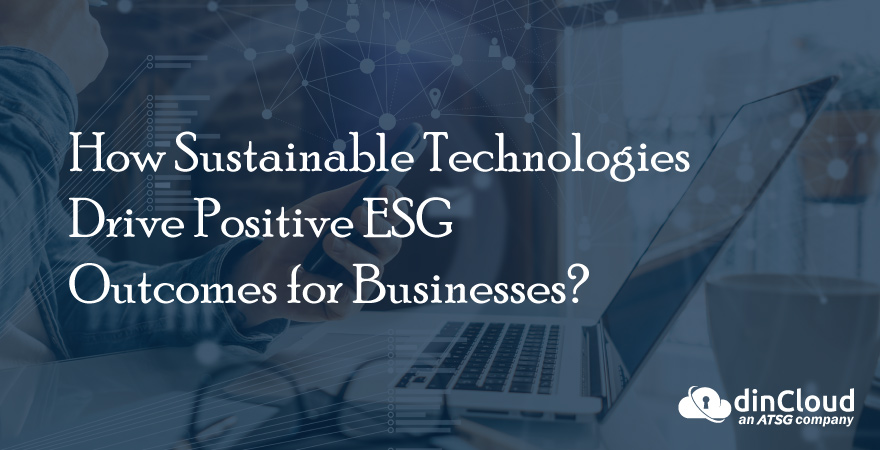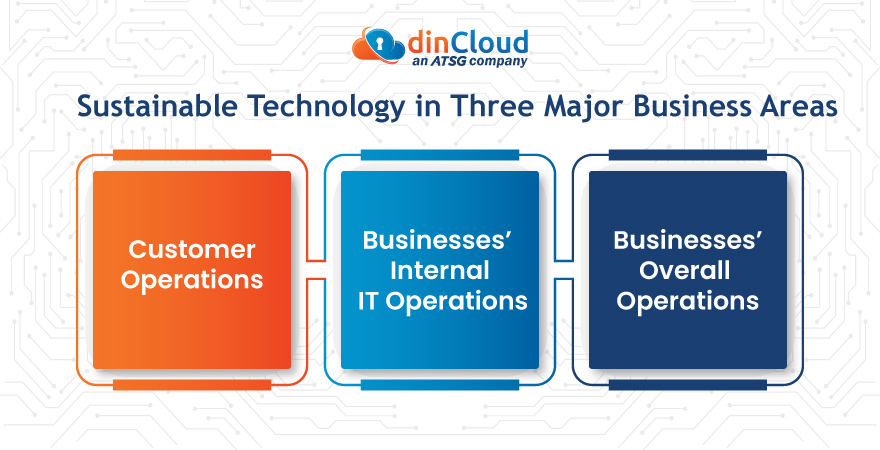Over the last decade, one topic that has persistently been a part of businesses’ boardroom discussions is sustainability. This is due to the fact that today’s environmentally-conscious consumers want to lead a “greener life”. For this, they tend to gravitate toward businesses that have climate change as a significant part of their corporate-governance agenda.
Autumn Stanish, a Principal Analyst at Gartner, is of the opinion that businesses can optimize their non-renewable energy consumption, costs, and asset utilization by leveraging sustainable technologies across their operations. This is the reason why investing in sustainable technologies can lay a strong foundation for achieving their environmental, social, and governance (ESG) objectives.

The fact that sustainability has now become mainstream, is reflected in a forecast by Gartner, suggesting that 50% of the Chief Information Officers (CIOs) will tie performance metrics to the sustainability of IT organizations, as early as the year 2025.

Sustainable Technology in Three Major Business Areas
In the present times, the scope for deploying sustainable technologies is huge for businesses. If done right, the following mentioned areas can particularly drive maximum opportunities and highly positive ESG outcomes for businesses.
1. Customer Operations
Enterprises often find themselves in a frustrating paradox, where customers expect and demand eco-friendly products, but are unwilling to compromise on the price and quality of products or services.
It is important that businesses work on their Customer Relationship Management (CRM), and figure out the factors that can drive sustainably-conscious consumer behavior. Businesses must devise innovative ways to inform their customers about how the consumption of their products or services can contribute to the achievement of environmentally sustainable goals.
By tailoring their strategies accordingly, enterprises can make their sustainable practices resonate more with their customers. This will result in a win-win situation for both customers, and businesses, as the latter’s bottom line will remain intact, without compromising on ESG initiatives.
2. Businesses’ Internal IT Operations
What will be your response if we ask you about the sustainable IT practices of your enterprise? If you try to utilize minimum resources, and the right tools and technologies to deliver maximum viable outcomes, then you are heading in the right direction.
In addition to this, enterprises must take care of the following things to guarantee that their internal IT operations are adding positivity to their overall sustainable practices.
- Businesses should work towards creating product transparency and leveraging sustainable and ethical sourcing.
- They should also try to cut off or minimize in-direct carbon emissions, outside their control. For instance, switching to the much “greener” solar energy for electricity.
- Enterprises must ensure transparency across their entire supply chain so that no human rights are violated within their internal IT and other business operations.
- In order to bring circular economy principles into IT operations, enterprises can utilize the latest sustainable practices, such as robots, to recycle products.
- Switching to hyper-scale Cloud Service Providers (CSPs) can also help in achieving sustainable operations, as a single Cloud Solutions Provider simultaneously caters to the needs of multiple enterprises.
3. Businesses’ Overall Operations
To reduce your enterprise’s overall carbon footprint, it is important that you invest your time and capital in practices that can advance your ESG goals. For instance, businesses’ trading practices and labor laws must be transparent and fair.
How Cloud Computing Furthers ESG Goals?
In order to achieve ESG goals, businesses can always rely on sustainable technology. Cloud Computing is one such leading technology and is huge these days. The Cloud’s scalability allows businesses to reduce resource wastage, and enable remote-based work. For real-time performance analysis, you can also leverage advanced analytics.
Unlike a single enterprise, whose data center(s) caters to just one entity, a single Cloud Service Provider (CSP) effectively serves the IT needs of several enterprises at a time. As a result, the impact on the environment, and the overall carbon footprint, is way less than every enterprise deploying its dedicated, on-premise data center.
This way, sustainable technology will provide a prism through which businesses can fulfill their ESG goals, without compromising on productivity or agility. The following section further discusses this point, in detail.
Develop a Strong Portfolio of Sustainable Technologies
Businesses should adopt the right mix of “green technologies”, that will guide them toward a sustainable future. This way, they will develop an effective “tech portfolio”, which will act as a “significant piece of the puzzle” for solving the global nuisance of climate change.
The following mentioned trends in digital innovations can help businesses achieve a sustainable future.
- Cloud Computing solutions have been positioned as a green and environment-friendly technology. When businesses deploy Cloud-based services and solutions across their IT operations, the elasticity and scalability of the Cloud give them the choice to utilize and pay only for the resources they actually need. Enterprise’s on-premise IT solutions lack this feature of shared utilization. So, Cloud solutions end up reducing adverse environmental impact and resource wastage. This way, Cloud Computing solutions act as a sustainable and superior alternative to on-premise IT infrastructures.
- Presently, a lot of enterprises are using Greenhouse Gas (GHG) management software to calculate and control their carbon emissions. It gives them a clear picture of data related to their previous, present, and even future GHG emissions. This way, enterprises can effectively plan to cut down carbon emissions, and even fulfill their reporting obligations.
- From raw materials to finished products, businesses want to optimize their supply chain and ensure ethical sourcing. They can achieve this by leveraging supply chain blockchain, which will help them secure, verify and trace all of their transactions.
- AI-based technologies and automation can also be used to develop greener operations and minimize resource-intensive operations.
Related Posts
- The Evolution of Digital Technologies
- Edge and Cloud Emerge as Complementary Technologies
- How are Cloud Technologies Transforming the Pharma Industry?
Conclusion
The quest for sustainability has transformed the competitive landscape of how we do business today. Not just that, it has also un-earthed tons of technological innovations for enterprises. These sustainable innovations yield numerous monetary and non-monetary returns for businesses. They enable businesses to achieve their environmental, social, and governance (ESG) goals as well.
Feel free to contact dinCloud, an ATSG company, for scalable and reliable Cloud Computing solutions for your enterprise. dinCloud has a global footprint of data centers that comply with some of the best environmental standards for sustainability.
dinCloud’s state-of-the-art global data centers are effectively catering to numerous enterprises. Some of those enterprises even have global operations. Our data centers are doing their bit in improving the overall sustainability and ESG standards globally. As more enterprises realize the value and sustainability proposition of Cloud Computing, the quantum of this positive contribution towards ESG goals will increase manifolds.


